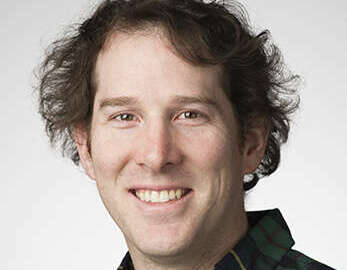

Hubbard Radio Washington DC, LLC. All rights reserved. This website is not intended for users located within the European Economic Area.
For decades, nuclear proponents have kept alive the idea of safe fusion power. Now the DoE has launched a program to rev up research into the technology.
Best listening experience is on Chrome, Firefox or Safari. Subscribe to Federal Drive’s daily audio interviews on Apple Podcasts or PodcastOne.
Champions of nuclear power in the 1950s predicted it would be too cheap to meter. That didn’t work out. But they were talking about fission. For decades, nuclear proponents have kept alive the idea of safe fusion power. Now the Energy Department has launched a grant program to rev up research into this science-fiction-like technology. For details, Federal Drive with Tom Temin turned to the program director in the Advanced Research Projects Agency-Energy, Dr. Scott Hsu.
Interview transcript:
Tom Temin: Dr. Hsu, good to have you on.
Dr. Scott Hsu: Thank you. Good to be here.
Tom Temin: Let’s begin with fusion energy itself. I always thought, my understanding, you know, since I was a kid was this was some sort of science fiction, that’s never really going to be something that is commercially viable.
Dr. Scott Hsu: Not so hope not so. Fusion is being produced in experiments all over. The real challenge is doing it in a way that gives you net positive energy. That’s the challenge people are working on today.
Tom Temin: So you can do a fusion but there’s more energy input than you get out of the fusion process at this point.
Dr. Scott Hsu: Yes, that’s correct, although we’re close,
Tom Temin: Got it and what has gotten us to this point so far?
Dr. Scott Hsu: 60 years of hard won research, scientific and engineering advances, pretty breathtaking advances in the key metric for fusion, which is the fuel density, the temperature and how long you can hold that energy in. And so the rate of rise of that metric has been really the key advance of fusion research over many, many decades. And we’re almost on the cusp of being at a level where you can get positive net energy.
Tom Temin: I see. And so therefore, it’s probably fair to say there’s not really a fusion industry yet. It’s still something that exists as experimental research work.
Dr. Scott Hsu: Today, that’s true. It is experimental research work, but there is a growing fusion industry poised to take advantage, you know, of the breakthrough. In fact, this growing industry today has both privately funded companies pursuing fusion energy concepts of their own, and also industrial companies that may become the supply chain for future fusion power plants. I wanted to point out there is a fusion industry association. It’s a relatively new industry association that launched in 2018. Its main members, 22 according to their website, are companies pursuing the development of future fusion power plants. There’s also affiliate members ranging from industrial partners to energy oriented NGOs, to companies interested in working with the fusion industry in various ways. So they’re poised.
Tom Temin: Got it. And so the Energy Department, the federal government, has an interest in helping us develop. And your grant program this new $32 million lower cost fusion concepts program covers three basic areas of fusion research. Tell us what those are.
Dr. Scott Hsu: Yeah, the beta program stands for breakthroughs enabling thermonuclear fusion energy. There’s three research categories as you refer to the first one is to support R&D to advance the scientific maturity of promising concepts that have inherently lower cost than the mainstream fusion concepts. And the second one is to support component technology development that could lower the cost of the more mainstream fusion concepts. And these component technologies could include, for example, high temperature superconductors, or additive manufacturing. And finally, the third category consists of capability teams. These bring together expert teams that are national labs and universities in theory and modeling, in machine learning and diagnostics, all to help accelerate the progress of multiple fusion concept teams that are supported by ARPA-E.
Tom Temin: And so it sounds like you’re trying to lower the cost of producing fusion energy, but also making the research itself more streamlined.
Dr. Scott Hsu: Yes, absolutely. In fact, the two we feel are correlated. The cost of doing the research as well as the ultimate deployment of a fusion system, and ARPA-E is definitely interested in supporting the R&D that has the potential of lowering both of those items by at least a factor of 10 compared to the present state of the art. I want to also add, if I may, that one of our theses in the beta program is that if we can demonstrate on a larger number of very promising lower cost concepts, you know, at a very attractive risk reward ratio, the thesis is that a greater amount of private sector interest in investments will then be brought to bear.
Tom Temin: Just out of curiosity, you mentioned that you need to have more energy come out of a process then goes into it to be any kind of viable process commercially. Is there a target differential when the Energy Department views this as something that could work commercially? That is twice as much comes out as goes in or 1.5 times as much.
Dr. Scott Hsu: That is a great question. And that ultimately is set by the competition, you know, in the energy markets. So clearly the higher that gain value is, then the more competitive you will be economically. So a great challenge for fusion is not only the technical challenge of achieving it, but also we’re up against a moving target, you know, that the energy market represents. So there’s not an easy answer, I guess, is the short answer. But in general, you want that game factor to be, you know, at least several, the higher the better, basically, but I think realistically, people are shooting for maybe five to 10 as a reasonable value to give you an economical system.
Tom Temin: Sure. And just tell us about the programmatic aspects of this. Are these standard grants that you are awarding or is it a challenge type of grant program? Tell us about that part of it.
Dr. Scott Hsu: Yes, at ARPA-E. And especially for the beta program. It’s predominantly what we call cooperative. agreements. These are the mechanism of funding and cooperative agreements allow ARPA-E to work very closely with the awardees and in negotiating technical milestones and in very active project management as they pursue their work.
Tom Temin: I see. So these could be academics, it could be people in the nascent industry, and it could be, I guess, other. What about the federal energy labs themselves, do they have any work here?
Dr. Scott Hsu: Yes, absolutely. In the ARPA-E fusion programs, in particular, have had a very good healthy balance across all those entities. About a third each really. A third to private fusion companies, a third to university lead, and a third to DoE national lab lead. That’s been a good healthy mix of participants.
Tom Temin: And finally, you mentioned I think, in a blog post or a story about this program that perhaps there could be commercial grade fusion demonstrations within 20 years. It struck me that’s about timeline for getting a human being to Mars? Do you think it’s going to be 20 years? Or could it be two years?
Dr. Scott Hsu: Well, it’s unlikely to be two years unless somebody comes up with a miracle. I’ll say I’ll definitely be cheering for both fusion and Mars. But I’ll say that the first three rules of fusion are don’t make any promises about timelines, right? The field have suffered too many black eyes already. But what I will say is that there’s a confluence of factors right now including mature fusion science, outside technology push, and a very strong market pull for fusions, energy generation characteristics. And with these factors in mind, ARPA-E believes that targeted investments today could enable an inflection point in the rate of fusion development to make 20 years of real possibility. That’s what’s driving our decisions right now.
Tom Temin: Dr. Scott Hsu is a program director in the Advanced Research Projects Agency-Energy. Thanks so much for joining me.
Dr. Scott Hsu: Thank you so much, Tom. It was a pleasure.
Copyright © 2024 Federal News Network. All rights reserved. This website is not intended for users located within the European Economic Area.
Tom Temin is host of the Federal Drive and has been providing insight on federal technology and management issues for more than 30 years.
Follow @tteminWFED


